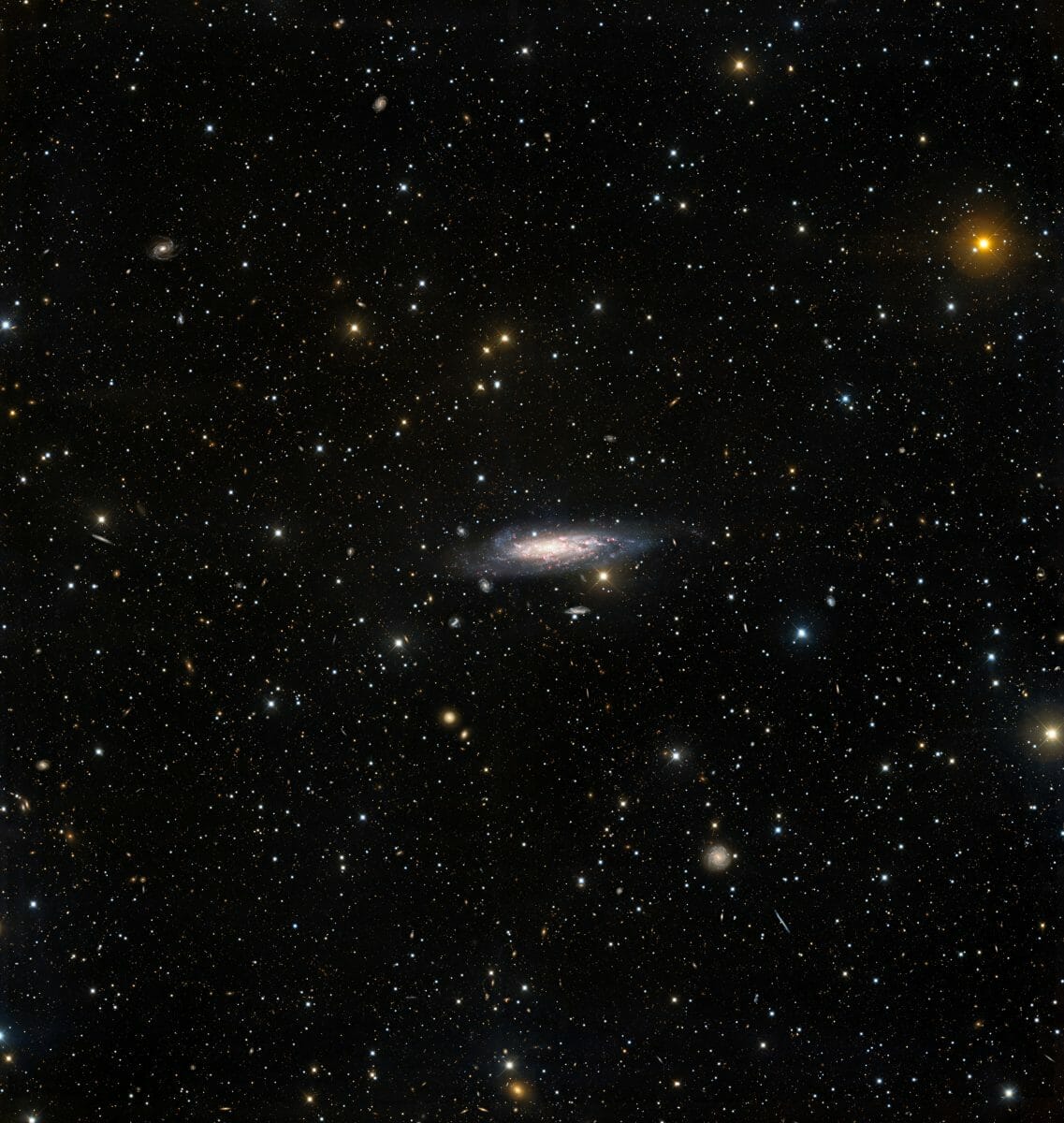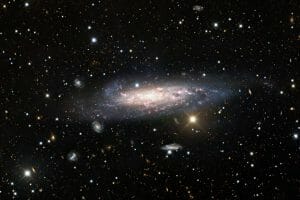Spiral galaxy “NGC 1003” (Credit: KPNO / NOIRLab / NSF / AURA)
This is a spiral galaxy about 30 million light-years away in the direction of “Perseus”「NGC 1003」is. In the spiral arm surrounding the bright yellowish bulge in the center, there are blue regions indicating that there are many hot young stars and red HII regions where star formation activity is active, and it is as if colorful flowers are in full bloom. It looks like a vast flower field.
It’s not just the colorful NGC 1003 that’s shown here.At first glance, around NGC 1003Another spiral galaxyYou can see that there are some, and if you look closely, it is yellowish without a swirl arm.Elliptical galaxyIt looks small in redA distant galaxyYou can see that there are innumerable.
Some of the stars in the Milky Way galaxy are much closer to Earth than the galaxies behind them, but much of the light that looks like bleeding dots is not a single star, but each one.A galaxy of tens and hundreds of billions of starsIt is. Behind the NGC 1003Cluster of galaxiesIs widespread, and in this image that it was taken with a long exposure of 70 minutesNumerous galaxies belonging to the cluster of galaxiesIs captured in detail.
Speaking of images that capture innumerable galaxies that exist in the distance“Hubble”The famous space telescope photographed the direction of the southern sky “Fornax” (Fornax)“Hubble Ultra Deep Field (HUDF)”And I caught the range of about one full moon including the range of HUDF“Hubble Legacy Field”And so on, but like NGC 1003From galaxies that are relatively close to the Milky Way galaxy to galaxies far awayImages that are captured at once are alsoThe depth of this universeIt makes me feel.
The opening image was taken by the Mayor Telescope with a diameter of 4 m at the Kitt Peak National Observatory in the United States, and was released on January 5, 2021 by the National Institute of Optical and Infrared Astronomy (NOIRLab) of the American Science Foundation (NSF). I will.

NGC 1003 and its surroundings (Credit: KPNO / NOIRLab / NSF / AURA)
Image Credit: KPNO/NOIRLab/NSF/AURA
Source: NOIRLab
Sentence / Takehiro Matsumura
Related article link (external site)
There may be many “planets” around the supermassive black hole
For the topical chopsticks rest on April 1st. Have a 13 billion year old globular cluster
Are you staring at us … The mysterious eye “Spiral Nebula” observed at multiple wavelengths



